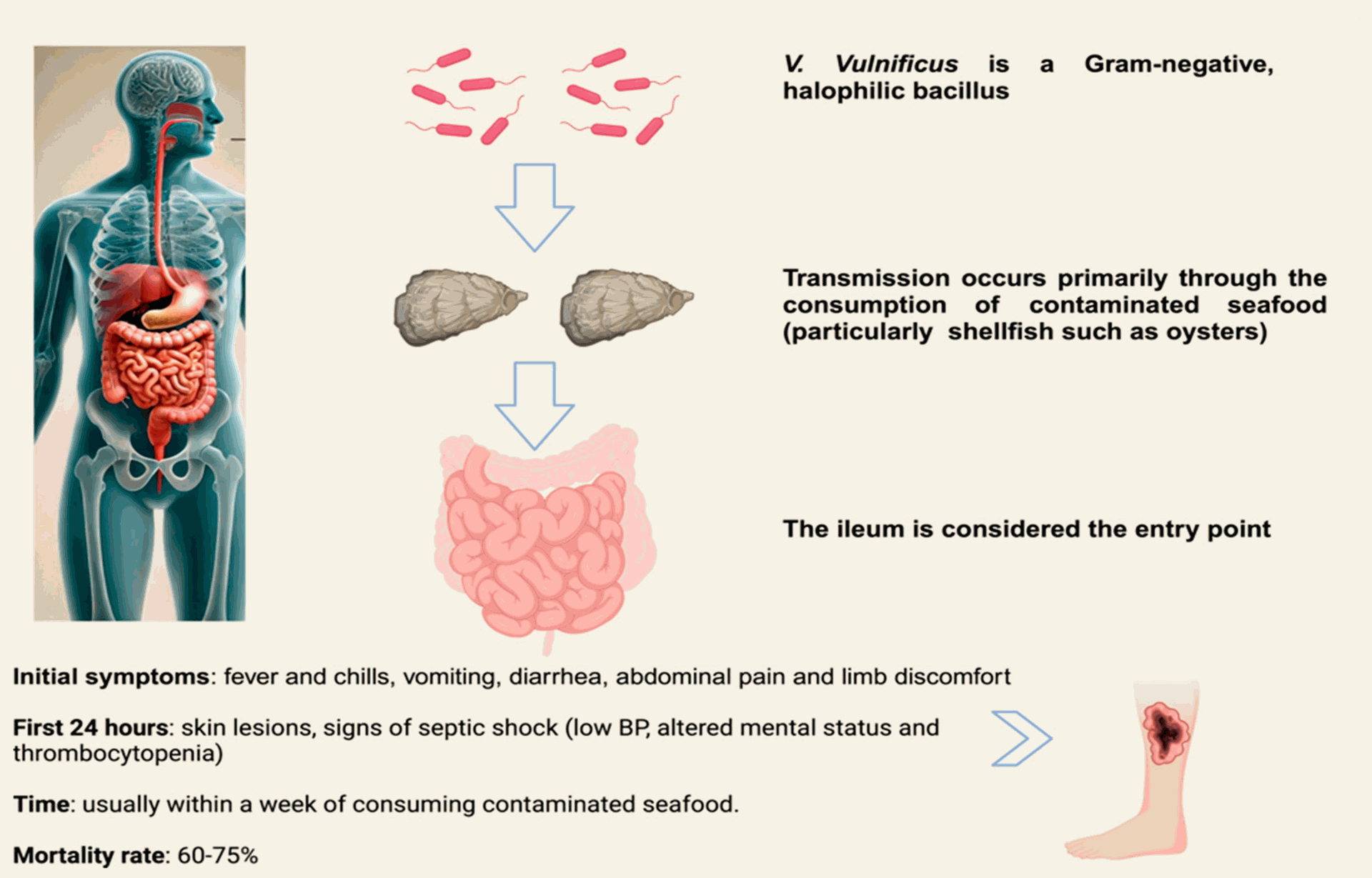Vibrio vulnificus is a species of Gram-negative, motile, curved rod-shaped bacteria that thrives in marine environments like estuaries, brackish ponds, and coastal waters. It's closely related to Vibrio cholerae, the agent responsible for cholera, and is recognized as one of the most virulent marine bacteria affecting humans. Warmer ocean temperatures and low-salinity waters fuel its proliferation, especially within filter-feeding shellfish such as oysters.

How Does Infection Occur?
There are three main pathways for Vibrio vulnificus infection:
- Consumption of Raw or Undercooked Seafood: Particularly raw oysters, which can harbor high concentrations of the bacterium without showing any visible signs of contamination.
- Wound Exposure: Open wounds or broken skin exposed to contaminated seawater can become infected, often leading to rapidly spreading and serious tissue damage.
- Invasive Sepsis: Especially dangerous for people with compromised immune systems or chronic liver disease. The bacteria can quickly travel from the digestive tract to the bloodstream, causing septic shock and blistering skin lesions.
Symptoms and Health Risks
- Gastrointestinal Symptoms: Vomiting, diarrhea, abdominal pain
- Wound Infections: Blistering, swelling, rapidly spreading skin infection, necrotizing fasciitis
- Systemic Infections: Fever, chills, septic shock, life-threatening complications
In severe cases, especially in immunocompromised individuals, infection can result in death. For example, in 2024, Florida reported 82 cases with 19 deaths attributed to Vibrio vulnificus.
Why Is Vibrio vulnificus Becoming More Common?
Climate change is a major factor. Warmer coastal waters and increased water recreation have dramatically raised infection rates in recent years. In the Eastern United States, cases increased eightfold from 1988 to 2018. With continued global warming, infection zones are spreading northward and could eventually cover the entire US Eastern seaboard—posing a threat to millions more people.
Prevention Tips
- Avoid eating raw or undercooked shellfish, especially oysters.
- Never expose open wounds to marine or brackish water; use waterproof bandages if necessary.
- People with chronic illnesses (liver disease, immunocompromised conditions) should exercise extra caution around coastal waters and seafood.
Financial and Stock Market Update: No Vibrio vulnificus Company Exists
The term "vibrio vulnificus" refers strictly to a bacterial species—it is not a company, so there are no related stock updates, financial statements, or market movements available. If you are looking for investment opportunities, consider medical diagnostics or biotechnology companies engaged in developing tests or treatments for marine-based bacterial infections, but there is no publicly traded entity named Vibrio vulnificus.
Vibrio vulnificus represents a significant and growing public health risk, particularly in warmer coastal regions. Awareness, proper food safety, and preventive measures remain the best defense against infection.
Stay informed and take appropriate steps to protect yourself and your loved ones, especially during the summer months when cases tend to spike.